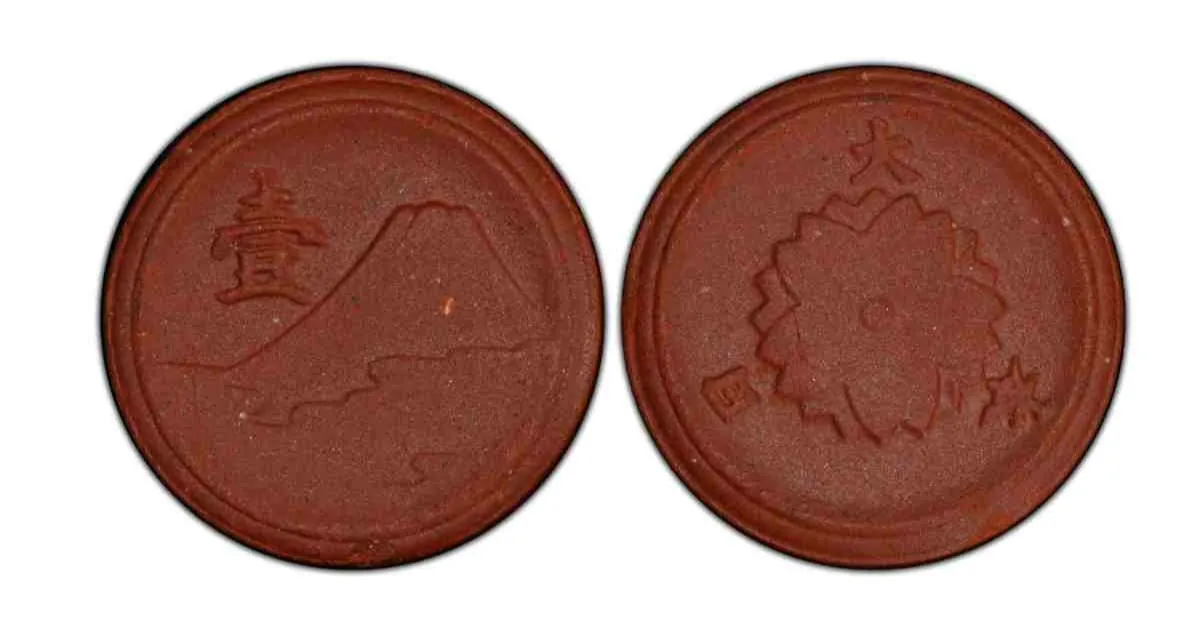When most people think of coins, they envision metal currency—shiny, durable, and timeless. However, during one of the most tumultuous periods in history, an unusual form of currency was created, not from metal, but from ceramic. This discovery of ceramic coins in Kyoto, Japan, adds a unique chapter to the story of money and reflects the creative solutions made during times of hardship. These ceramic coins, created during World War II, are now highly valued by collectors and hold a significant place in the history of currency.
A Shortage of Metal During WWII
The creation of ceramic coins was born out of necessity. As World War II raged on, Japan, like many countries, faced severe shortages of metals needed for manufacturing munitions, tools, and everyday items. In response, the government sought alternative materials for their currency system. This led to the development of ceramic tokens, a novel solution during the war when metal was too precious to be wasted on coins.
The Discovery of Ceramic Coins in Kyoto
In October 2023, a major discovery made headlines worldwide: over 500,000 ceramic coins were found in Kyoto, Japan. Kyoto, known for its rich cultural and historical significance, was once the capital of Japan for more than a thousand years. The coins were discovered in a warehouse near one of the city’s old mints, located in Higashiyama Ward.
These ceramic coins were made of porcelain and were designed to function as currency during the metal shortage. They were intended to be used in Japan’s domestic market, replacing metal coins that were in short supply. However, due to the end of the war, these tokens were never released into circulation.
The Purpose of the Ceramic Coins
The ceramic tokens discovered in Kyoto were worth 1 sen, which is one-hundredth of a yen. Though they were technically currency, they were more symbolic of Japan’s effort to innovate in a time of scarcity. The Japanese government had planned to release these porcelain tokens in July 1945, but the war ended in August, just a month later. Consequently, these coins were never issued to the public and remain uncirculated to this day.
The coins were not only meant as a substitute for metal coins but also as a temporary solution during the final stages of the war. The ceramic material was chosen for its availability, as well as its ability to withstand the wear and tear that metal coins would typically experience. Unfortunately, by the time the coins were ready for distribution, the war’s end rendered their production obsolete.
The Historical Significance of Ceramic Coins
These ceramic tokens are considered a rare and invaluable piece of history. They are an example of how nations can adapt to unexpected challenges, finding new ways to solve old problems. While the coins were never used, they represent a critical moment in Japan’s wartime economy.
Collectors around the world are beginning to appreciate the value of these uncirculated ceramic coins. Although they may not have circulated in everyday life, their historical context makes them significant artifacts, reflecting the resilience of a nation during a time of crisis. Their value continues to rise as collectors and historians seek to preserve this unique chapter in the history of currency.
Conclusion
The discovery of ceramic coins in Kyoto serves as a reminder of the innovative solutions that arise during times of hardship. These porcelain tokens, created as a substitute for metal currency during World War II, never made it to circulation due to the war’s end. However, their discovery decades later has made them highly sought after by collectors, who value them not only for their rarity but also for the story they tell about the impact of global conflict on everyday life. Today, these coins are cherished as valuable relics of Japan’s wartime history and a testament to human ingenuity during one of the most difficult periods in modern history.




![Tyson Foods Plant [Photo: Food Manufacturing]](https://southarkansassun.com/wp-content/uploads/2023/08/iStock_1185520857__1_.5e441daa51cca-600x337.jpg)







![Silverado Senior Living Management Inc. [Photo: Los Angeles Times]](https://southarkansassun.com/wp-content/uploads/2023/10/download-6-4-600x337.jpg)

![China's Wuhan Institute of Virology [Photo: Nature]](https://southarkansassun.com/wp-content/uploads/2023/09/d41586-021-01529-3_19239608-600x337.jpg)
















